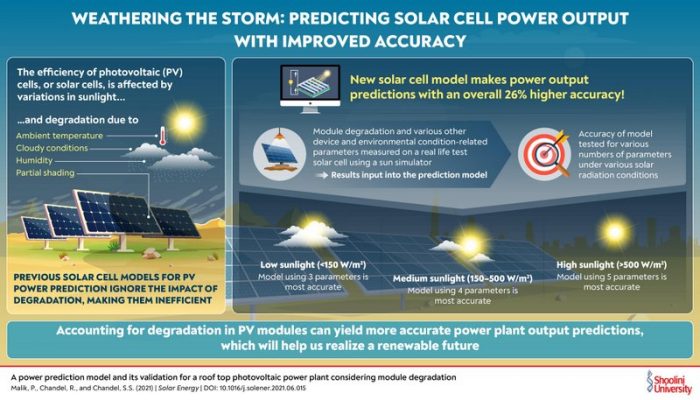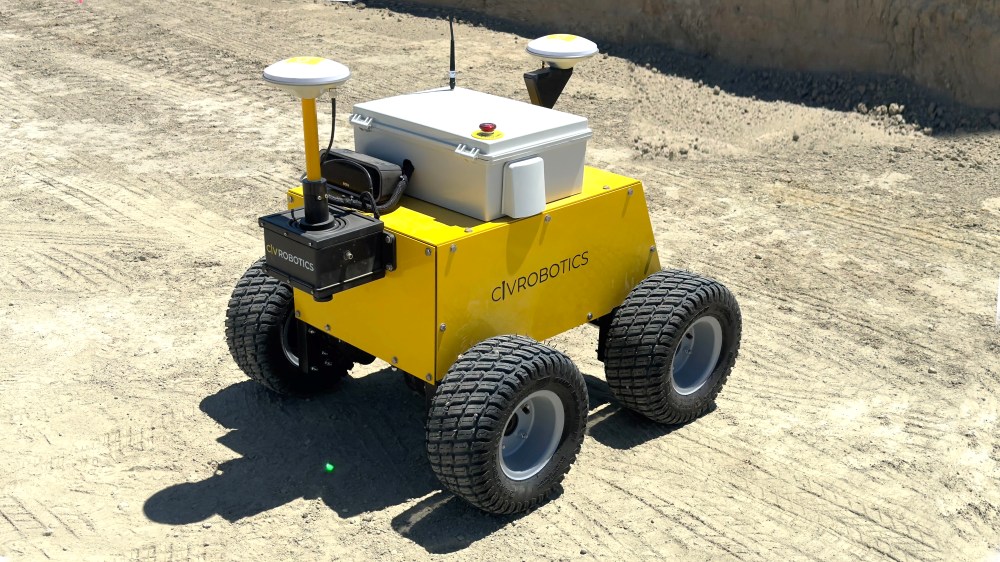Better solar PV output prediction model? Shoolini University researchers say they have one

Forecasting how much power a PV system will produce over a given amount of time is not a straightforward task, and reports of PV underperformance around the globe shows there is still room to improve our current methods. Scientists from Shoolini University, India, in collaboration with the National Institute of Technology, Hamirpur, India, say they have developed a new mathematical model that more precisely predicts the output power of solar cells.
By taking into account the degradation of the photovoltaic modules over time (as well as other external factors), their testing indicates that this model is more accurate than existing ones, which could help produce more precise power generation forecasts.
As we know, in spite of the remarkable strides made in photovoltaics (PV) technology, the performance of a solar cell is just one of a hundred variables involved in making solar a reliable generation source. For solar power projects to be funded and rolled out, decisionmakers need to know ahead of time how much energy the installed PV systems will provide, both for technical and administrative reasons. Of course, since solar cells are devices that harvest solar radiation, their solar-to-electricity conversion performance is tied to a variety of external factors, such as cloudiness, temperature, and humidity.
In their recent study published in Solar Energy, the researchers’ approach is based on the well-established single-diode model, which offers sufficient accuracy without requiring too much computational complexity. The developed model can take into account three, four, or five different solar cell parameters depending on the level of precision needed.

Most importantly, it considers the degradation of the solar cell components over time—something which previous models did not factor in.
To test the accuracy of their model under real conditions, the researchers first determined the values of the model parameters in a controlled experimental setup using a Class-A Sun Simulator over a test PV module. Once the parameters were determined and the predictions made, they studied a solar PV module and then 1 kWp PV system installed on the rooftop of the Centre for Energy and Environmental Engineering at the National Institute of Technology, Hamirpur. From there, the researchers gathered data to validate the predictions of their model.
The results are promising, as the predictions of the proposed model are more accurate than those of previous ones.
Additionally, the researchers noted the number of solar parameters to include in the model so as to produce the best predictions with varied temperature and solar radiation intensities (in other words, with the time of day, season, and weather conditions).
These insights will be helpful in future studies on solar energy. “Our model could be useful for developing PV power forecasting software capable of predicting daily, monthly, and yearly solar power generation, which is a crucial parameter for calculating the electricity supply and demand distribution, as well as for marketing PV systems,” says Shyam Singh Chandel, lead researcher from the Centre of Excellence in Energy Science and Technology at Shoolini University, India.
According to the researchers, their work could ultimately help improve the efficiency of solar cells and PV technology in large solar power plants. “Being able to predict the output power of different PV technologies will help interested parties decide for the best option available in the market for a particular location,” explains Prof. Chandel, “Based on the foreseen energy generation and the selected technology, one can estimate the total expenditure and payback period for a given project.”





Comments are closed here.